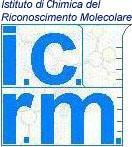
|

|

|

|
|
BEPPE (Binding Epitope Prediction from Protein Energetics) | ||||
| BEPPE (Binding Epitope Prediction from Protein Energetics) predicts potential antibody binding sites (B cell epitopes) and MHC-II epitopes (T helper cell epitopes) from the 3D structure of antigens. The predicted epitopes may be in the form of linear as well as discontinuous epitopes. The method bases on the idea that recognition sites may correspond to localized regions on the surface whose residues are not optimally stabilized, so that they can tolerate variation in their structure and conformational state. This allows them to undergo conformational changes, adapting to the interaction with a binding partner (an antibody, a protein...), and at the same time representing favored sites for cleavage upon antigen degradation. By this means, the analysis of the energetic properties of a single protein structure can lead to the identification of putative binding sites (For an in-depth explanation of the method, click here). To carry out the prediction:
- Your file names (pdb and zip) contain spaces or non English characters (ñ, é, ï, etc) - Your pdb contains regions not solved (without coordinates for their atoms. Example: 4BZ0_A P170..R177) - Your email adress is in a google server (eg: gmail.com). They DO NOT accept beepe emails. Others do (eg: Microsoft servers like outlook.com) |

|

|

|

|
|